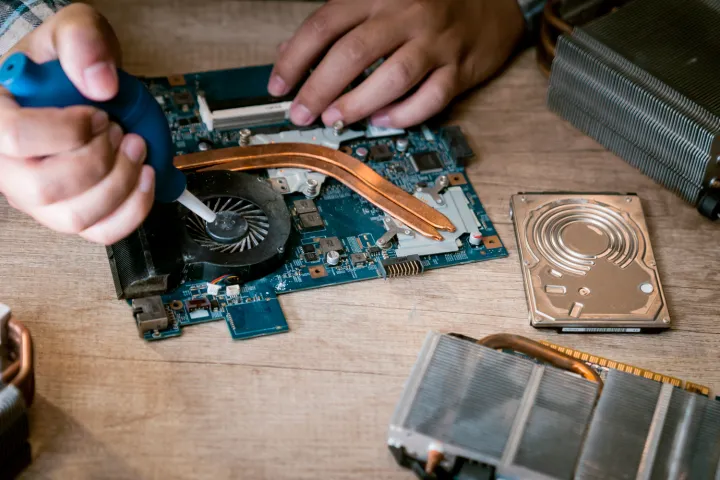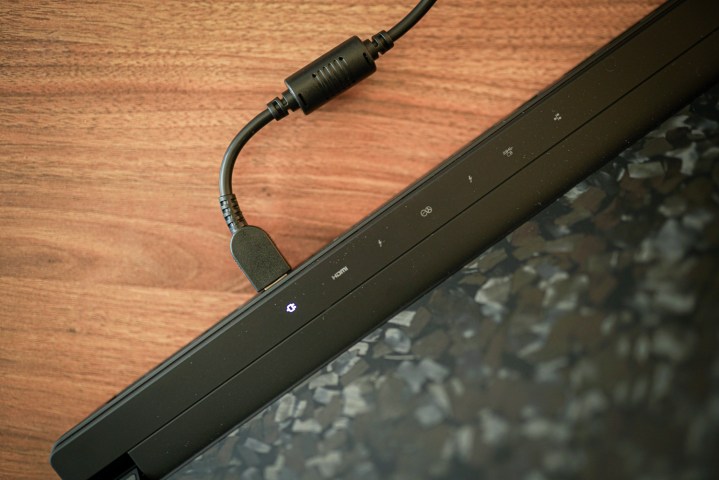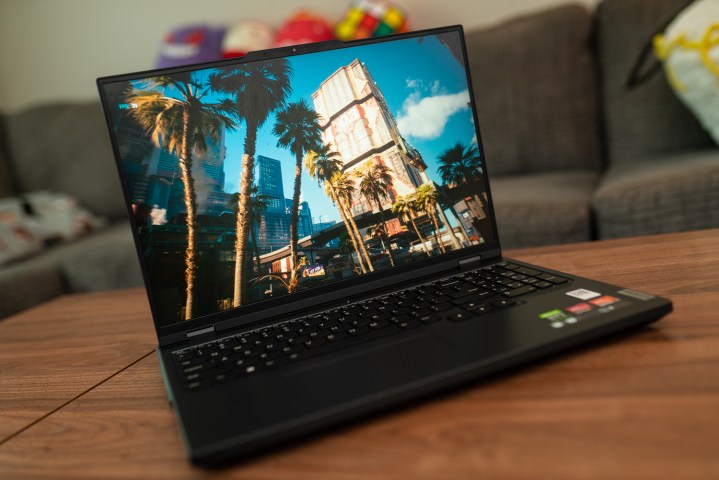You finally settled on the best gaming laptop, but how do you take care of it? There’s the routine maintenance of installing Windows updates and updating your GPU drivers, but there are some critical mistakes you should avoid to keep your gaming laptop running smoothly.
I’ve reviewed dozens of gaming laptops and used them for years, and I’ve learned that some basic preventative steps can keep your gaming laptop performing at its best. Here are the things you should pay attention to.
Let it get dirty

Treat your gaming laptop like royalty. It seems obvious, right? You don’t want your expensive piece of tech getting dirty, and you certainly don’t want it getting caked in dust. But some dog hair here, a little dust there, and you suddenly have a laptop that isn’t running as smoothly as it did out of the box. That’s not to mention a quick snack spilling some crumbs on your keyboard.
It’s not just for looks. Keeping your gaming laptop clean is an essential maintenance step that can prolong the life of your machine. A common thread throughout these tips is proper thermal management, which is still a critical aspect of a high-performance gaming laptop in 2023. If you let dust accumulate on the fans, they won’t cool as effectively, and your components won’t boost to their maximum speed.
Just how important are those thermal constraints? I haven’t dirtied an expensive gaming laptop, but I have a good illustration of just how big of a difference thermals can make. If you compare the performance of the Alienware x14 R2 to the Asus ROG Strix G17, the Asus laptop is somewhere around 20% faster in games despite the fact that both machines include an RTX 4060 GPU. The Strix is able to just push much more cooling due to being a much larger laptop.

I don’t think you’ll see a 20% drop simply from dust, but there are definitely tangible performance drops you can experience in a gaming laptop if you don’t keep it clean. Cooling efficiency is massive in gaming laptops, so pull out your compressed air and make sure to keep your machine tidy.
Leave it in performance mode

You don’t always need to run your gaming laptop at full tilt, and in most cases, you shouldn’t. Most gaming laptops come with a handful of performance modes that you can toggle between, and you should default to the highest performance mode when playing most games. Still, the other modes are there for a reason, and you should make good use of them.
The highest performance mode on your gaming laptop will crank the power to the GPU and CPU, as well as increase your fan speed. That’s exactly what you want when playing a demanding game like Cyberpunk 2077, but it’s not a good idea when you’re not pushing your laptop to its limits.
You’re not going to damage your laptop by running it in its highest performance mode constantly, but you will pay in battery life and noise. In cases where you’re just browsing the internet or doing other lightweight tasks, you can bump down to the balanced or even silent mode to extend your battery life and keep your laptop from getting too loud.
It can be applied in gaming situations, too. I was recently playing through Sea of Stars on the Razer Blade 14, which is a 2D turn-based RPG with pixel art. Not even remotely demanding for a Blade 14 packing an RTX 4070, but the fans were still running at full tilt in the highest performance mode. I was able to bump down to the balanced mode, cut the fan noise almost entirely, and run the game without a second thought about performance. Not every game calls for your laptop to run as fast as it can, and it’s important to recognize those situations and swap to a more appropriate power mode.
Use both of your GPUs

Your gaming laptop comes with two GPUs. One is the discrete GPU that you use for games, and the other is the integrated GPU that’s built into your processor. The integrated GPU isn’t very powerful, but it’s a good option to have to save battery life when you’re not playing games.
Both AMD and Nvidia have solutions that integrate both — for Nvidia, it’s Optimus, and for AMD it’s Hybrid graphics. The idea is to use both of the GPUs for maximum performance and battery life, but it rarely plays out that way in practice. In most situations, you’ll be sacrificing some gaming performance, even if you’re plugged into a wall and aren’t concerned with battery life.
The solution is to manually switch to only your discrete GPU when playing games, which you can do in the Nvidia Control Panel or Radeon Software. There are some games where you won’t see a massive uptick in performance, but others could show gains of 10% or more with the integrated GPU removed as a bottleneck.
This is becoming less of an issue with more modern laptops. Nvidia’s Advanced Optimus can switch to the discrete GPU automatically, for example, delivering on the promise of the best performance and best battery life. In addition, MUX switches are becoming more common on gaming laptops, which bypass the integrated graphics entirely (though at the cost of battery life). In both of these cases, however, make sure your laptop supports these features. If it doesn’t, you’ll need to manually swap between the preferred GPUs.
Forget your charger

Gaming laptops don’t usually have the best battery life, but you’ll want to keep your charger handy regardless. Playing games on battery power is a bad idea, not only for lower performance but also for the longevity of your gaming laptop.
Even if you’re playing games in the highest performance mode, most gaming laptops can’t draw the power they require solely off the battery in demanding gaming situations. If you’re playing games on your laptop without the charger attached, you’re leaving a lot of performance on the table. That’s not to mention the issues with battery life you’ll run up against.
It’s hard on your battery, too. Although years ago it wasn’t a good idea to leave laptops plugged in indefinitely, it’s not as much of a concern today. Most laptops stop charging when the battery reaches full capacity, giving power directly to the machine without cycling the battery. If anything, letting your battery completely drain and fully recharging it will do more damage over time.
Note this only applies if your laptop is in use. If you’re leaving your gaming laptop alone for an extended period of time, drain the battery to about half capacity before shutting off the machine, and don’t leave it plugged in during that time.
Overclock your components

There’s nothing stopping you from overclocking the GPU in your gaming laptop, and even some modern Intel CPUs allow for overclocking. It’s just not a great idea in most situations. As you can probably guess, that all comes down to thermals.
A lot of gaming laptops can hit thermal limits even at stock settings — there’s a reason tools like ThrottleStop exist and are still updated to this day — so pushing your components any further will not only provide no benefit in your performance, it could reduce the longevity of your components. That’s especially true if your components are just barely making it by thermally at stock settings.
There’s some nuance here, however. Although it’s generally not a good idea to overclock components in your laptop, it’s not always out of the question. Massive laptops like the MSI GT77 Titan can handle the extra heat, so you might be able to get away with a bit of overclocking. In addition, some laptops include an option in the bundled software to overclock the GPU, such as the Asus ROG Zephyrus M16. This is within recommended use, so you can use the overclock option without any concern.
There are some laptops that can handle a minor overclock, but most can’t. It’s best to stay within the recommended parameters your laptop can handle, as most laptop brands are already pushing their gaming laptops as far as they can go (even to a throttling fault).
Editors’ Recommendations




